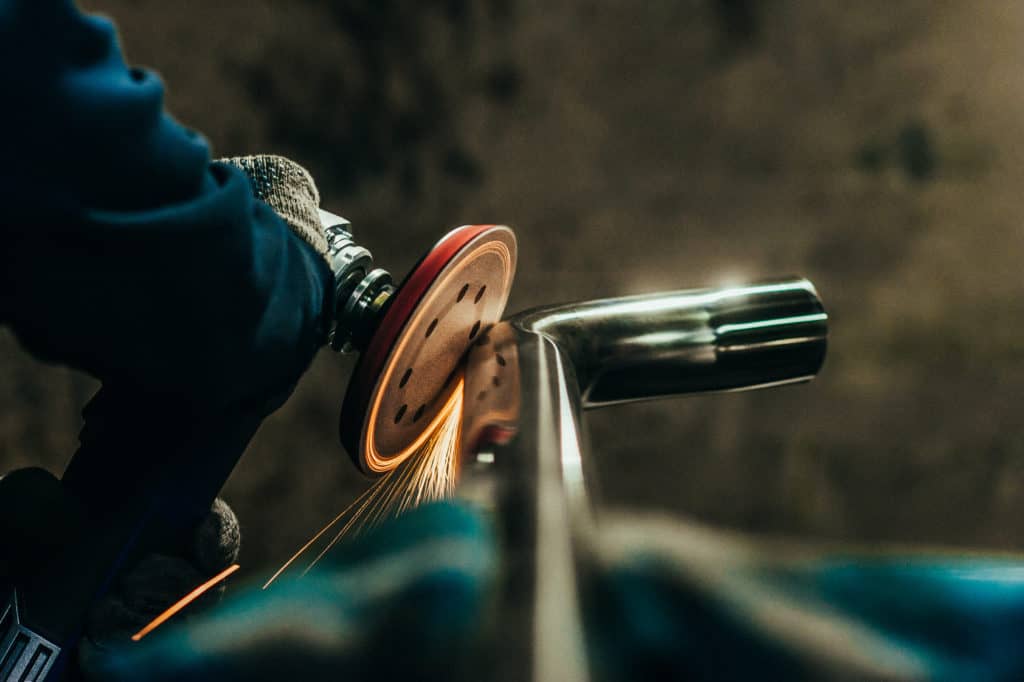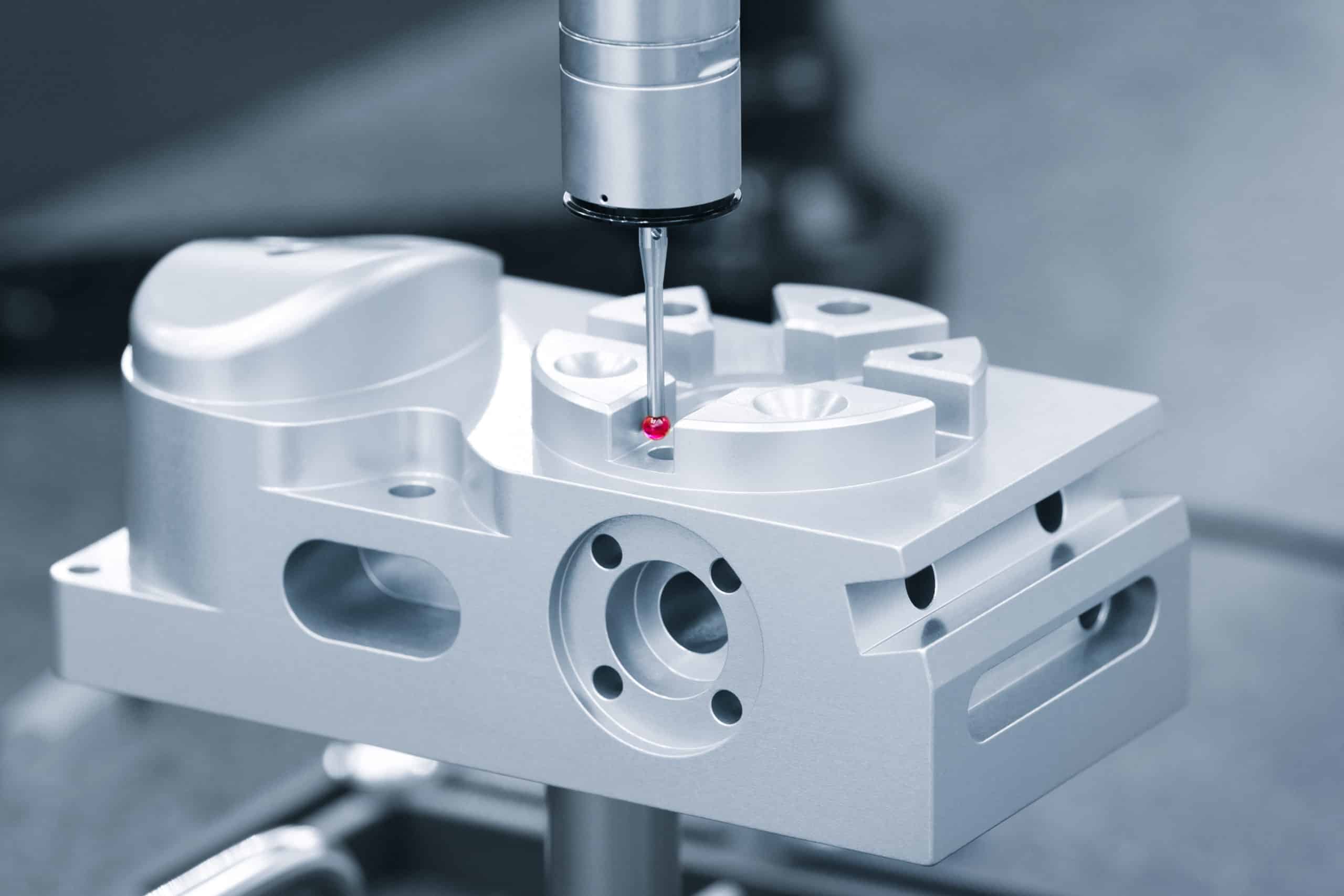101 of Powder Coating
Powder coating is a surface finishing technique in which a powder made of resins and pigments is applied to metal parts using electrostatic charges and then cured under high heat. This process results in a durable, uniform finish that can withstand harsh conditions.
Table of Contents
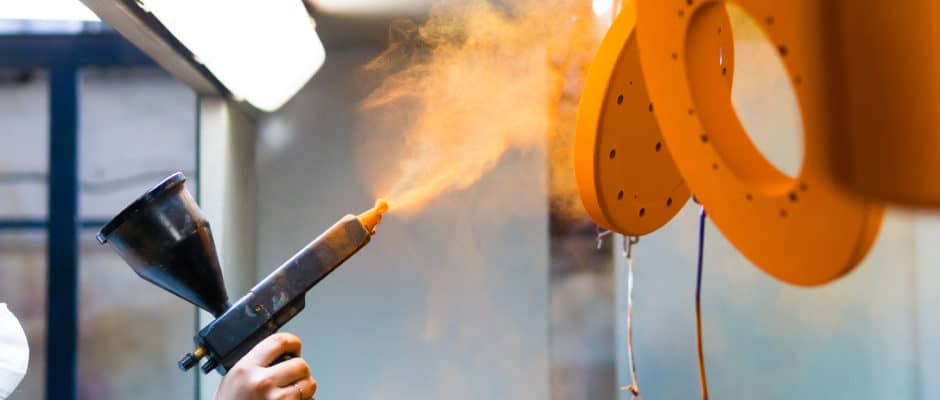
The Powder Coating Process
Types of Powder Coating
Understanding the powder coating process is essential for appreciating its benefits and potential drawbacks.
To apply a powder coating, a dry powder (usually polymer resin) is applied to a metal surface and heated to create a durable coating. Powder coatings come in two types: thermoset and thermoplastic. The desired result and the specific application determine the choice of coating material.
- Thermoset Powder Coatings are made from a mixture of polymer resins, flow modifiers, and pigments. When these coatings are heated, a chemical cross-linking reaction occurs, creating a robust and durable bond resistant to heat, chemicals, and UV light breakdown. Thermoset coatings are popular for their durability and wide range of powder colors.
- Thermoplastic Coatings are made from polymer resins that do not undergo a chemical reaction during curing. Instead, they melt and flow together when heated, forming a solid bond when cooled. The coatings are recognized for their ability to bend without breaking, withstand impacts, and be reused or recycled.
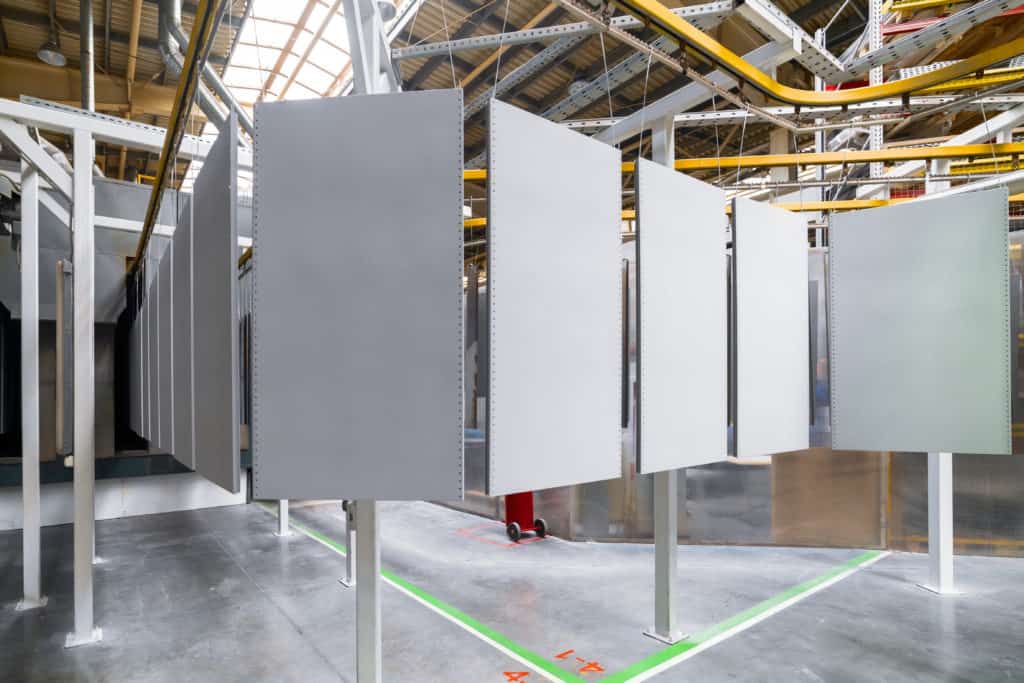
Electrostatic Spray Deposition
One of the most common methods for applying powder coating is electrostatic spray deposition (ESD). The powder particles are given an electrostatic charge using a spray gun. Attraction occurs between the charged particles and the metal surface, grounded to create an even, uniform finish.
Once the powder is applied, the coated part is placed in a curing oven, where heat melts the powder and triggers a chemical reaction, bonding the coating to the metal surface.
This method is handy for producing thicker coatings on horizontally and vertically coated surfaces. The electrostatic process minimizes excess powder and reduces waste, making it a cost-effective option in the powder coating industry.
Fluidized Bed Method
Another method for applying powder coating is the fluidized bed method. In this process, the metal component is preheated and then immersed in a container of fluidized powder material, suspended by air, creating a fluid bed. When the preheated part gets hot, it melts the powder, which then sticks to the surface and makes a thick and even coating.
The fluidized bed application is ideal for coating large, irregularly shaped objects, as it produces a more consistent finish than the electrostatic spray deposition method. However, it may be less suitable for producing fine detail or thinner coatings.
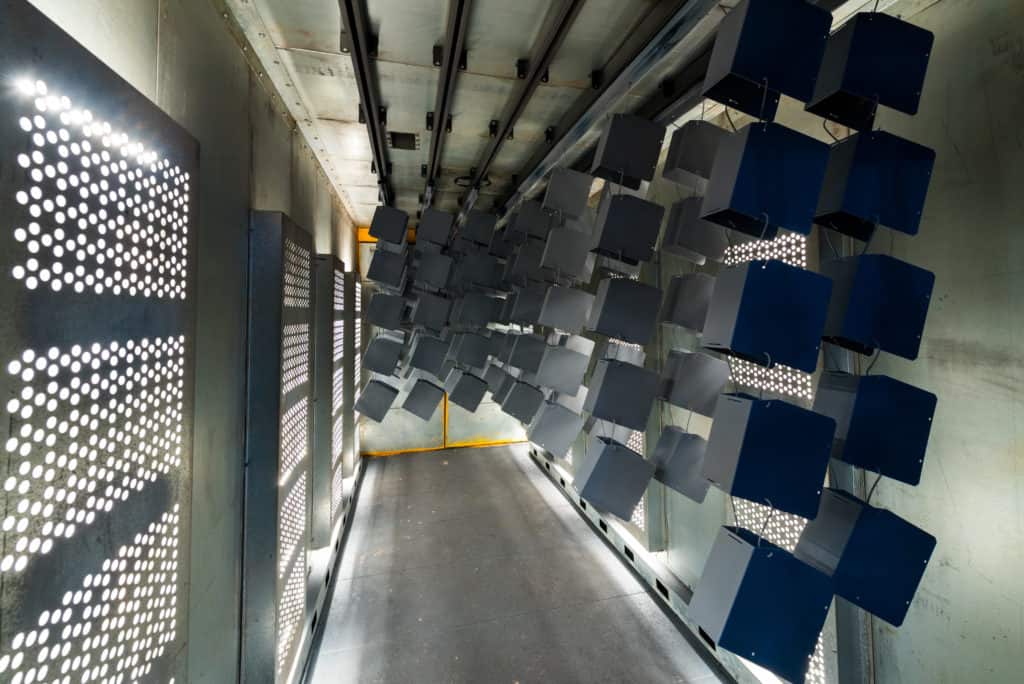
Advantages of Powder Coating
Powder coating offers numerous advantages over traditional liquid coatings and paints. The benefits that stand out are as follows:
The layers are thicker and more durable.
The finish is uniform.
They are eco-friendly and cost-effective.
They resist wear and tear.
Thicker and More Durable Coatings
The ability to produce thicker coatings without running or sagging is one of the most significant advantages of powder coating. This results in a more robust and long-lasting finish resistant to chipping, scratching, and fading. The curing process in powder coating creates a strong chemical bond between the layer and the metal surface, contributing to its durability.
Uniform Finish with Minimal Appearance Differences
Powder coating provides a uniform finish across the entire surface of the coated part, with minimal appearance differences compared to spray painting or other conventional coating methods. The electrostatic process ensures an even distribution of powder particles, resulting in a consistent, high-quality finish.
Environmentally Friendly
Using powder coating instead of liquid coatings is more environmentally friendly because it emits fewer volatile organic compounds (VOCs). The absence of a liquid carrier in the powder coating materials means no harmful solvents escape the atmosphere during application. Collecting and reusing the excess powder generates less waste and minimizes the environmental impact.
Cost-effective and Efficient Production Process
The powder coating process is cost-effective due to its efficient use of materials and reduced waste. The ability to collect and reuse excess powder particles lowers material costs, while the electrostatic application process ensures less overspray and lower overall consumption of coating materials. Furthermore, the powder coating process generally requires fewer steps than traditional liquid coating processes, reducing labor costs and increasing production efficiency.
Resistant to Chipping, Scratching, and Fading
The chemical composition and curing process of powder coatings result in a hard, durable finish resistant to chipping, scratching, and fading. Despite harsh environmental conditions or heavy use, powder-coated surfaces remain attractive and intact.
Rust Proof and Protective for Metal Surfaces
Powder coating offers excellent rust protection for metal surfaces, as the coating acts as a barrier between the metal and the environment. The protective layer prevents rust formation by stopping moisture, oxygen, and other corrosive elements from penetrating the metal surface. Additionally, the phosphate rinse often used in the pre-treatment process further enhances the corrosion resistance of the coated part.
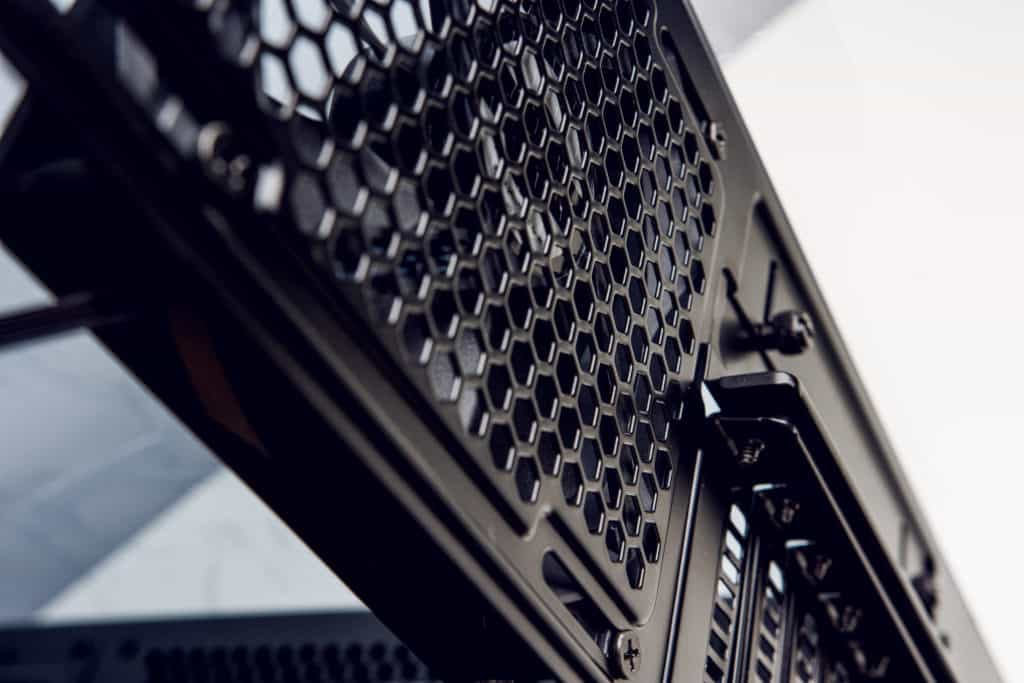
Disadvantages of Powder Coating
Despite the numerous benefits that powder coating offers, there are some drawbacks to consider when deciding whether to use this finishing technique. These disadvantages include limited color selection, difficulty in repairing or touching up the coating, material compatibility limitations, and the need for specialized equipment and skills.
Limited Color Selection Compared to Traditional Paints
While the range of powder colors available for powder coating has expanded over the years, it still cannot match traditional liquid paints’ virtually limitless color options. Custom color matching can also be more challenging and time-consuming with powder coatings, which may pose a drawback for some projects requiring specific colors.
Challenging to Repair or Touch Up Once Cured
One of the primary downsides of powder coating is the difficulty in repairing or touching up the layer once it is dry. Unlike liquid paint, which can be easily sanded and recoated, powder coating requires the entire coated part to return to the factory for refinishing if any damage occurs. Especially for large or intricate components, this can be time-consuming and costly.
Not Suitable for All Materials or Surfaces
Powder coating is not suitable for all materials or surfaces. It works best on metal components but may not adhere to certain plastics, wood, or other non-conductive materials. Additionally, the high heat required during the curing process can damage heat-sensitive materials, limiting the range of suitable substrates for powder coating.
Requires Specialized Equipment and Skills for Application
Applying powder coating requires specialized equipment, such as powder coating guns, electrostatic charging devices, and curing ovens. This equipment can be expensive and requires a dedicated workspace for proper operation. Applying powder coating correctly demands skill and experience, which may be a barrier for smaller businesses or DIY enthusiasts.
When it comes to cosmetic options for powder coating, the application is a significant consideration, and different application methods can result in varying finishes, such as smooth or textured. The thickness of the powder coating can also affect the result. Generally speaking, an even and smooth finish requires a thicker coat of powder, while a textured finish may require a thinner application. However, it is crucial to remember that too thick of a coat can lead to sagging or running during the curing process. with a professional for guidance on determining the appropriate thickness for your specific project and desired finish.
Applications of Powder Coating
Powder coating technology’s ability to adapt to different applications has made it a widely used option in multiple industries. Its ability to provide durable, uniform, and attractive finishes on various surfaces has led to its widespread use in many products and projects. Some common applications of powder coating include:
Automotive Parts
Powder coating is widely used in the automotive industry to provide durable, attractive powder coat finishes on wheels, suspension, and engine components. The dry powder coating process creates a hard coating resistant to chipping and scratching, making it ideal for automotive parts exposed to harsh environmental conditions and wear and tear.
Appliances
Household appliances, like dishwasher racks, ovens, and refrigerators, often feature powder-coated surfaces. Unlike paint or other conventional coating methods, the thick coatings provided by powder coating technology are well-suited to withstand the daily use and wear experienced by these appliances. The powder coating institute promotes using powder coating applications in the appliance industry due to its durability and environmental benefits.
Metal Furniture
Both indoor and outdoor metal furniture can benefit from powder coating, providing a durable, attractive finish that resists fading, chipping, and scratching. Powder coating equipment, such as the powder coat gun, allows for even and thorough coverage of complex shapes and designs, making it a suitable choice for furniture items like patio sets, office chairs, and shelving units.
Outdoor Equipment
Equipment exposed to the elements, such as playground equipment, bicycle racks, and fencing, often features powder-coated finishes. The protective barrier created by powder coating helps prevent corrosion and damage from weather, ultraviolet light, and other environmental factors. The powder coating work on these items ensures a long-lasting and attractive finish.
Architectural and Construction Materials
The architectural and construction industries widely use powder coating because it provides a solid and weather-resistant finish for window frames, railings, and building facades. The powder application process allows for even, thorough coverage of complex shapes and designs, making it a suitable choice for these components. Powder-coated parts in architecture and construction are known for their longevity and resistance to environmental factors.
Electronic Components
Many electronic components, such as computer cases, audio equipment, and electrical enclosures, utilize powder coating for a durable and attractive finish. Unlike conventional paint, powder coats provide a melt-mixed, uniform finish on these intricate components, making them an ideal choice for electronic devices. Protective gear is sometimes necessary during the powder coating process to ensure workers’ safety and the finished product’s quality.
In summary, the versatility of powder coating makes it an ideal finishing option for various applications across various industries. Many products and projects use it because it can provide a long-lasting, even, and appealing finish on different surfaces, such as automotive parts and dishwasher racks.
Ready to get your parts?
Health and Environmental Considerations
Health and environmental factors are crucial in the decision-making process when evaluating different finishing techniques. Powder coating is often considered more environmentally friendly and health-conscious than liquid paints. This section will explore the various health and environmental considerations associated with powder coating.
Reduced Volatile Organic Compounds (VOCs)
Powder coating is advantageous mainly because it produces fewer volatile organic compounds (VOCs). Unlike conventional liquid paints, which typically contain solvents that release VOCs into the atmosphere, powder coatings are solvent-free. It makes the powder coating process a more environmentally friendly option, as it significantly lowers the release of harmful chemicals into the air.
Improved Air Quality and Workplace Safety
Reducing VOC emissions in the powder coating process also improves air quality and workplace safety. Workers in powder coating facilities are less likely to be exposed to harmful chemicals, as the dry powder does not release fumes or solvents. Wearing protective gear, such as masks and gloves, can make powder coating safer.
Waste Reduction and Recycling
Another environmental advantage of powder coating is its potential for waste reduction and recycling. The electrostatic application process allows for more efficient use of materials, as any excess powder can be collected and reused. The method minimizes waste and reduces material costs, making powder coating a more cost-effective and sustainable finishing option.
Energy Efficiency
Powder coating is generally considered more energy-efficient than traditional liquid painting methods. Since the curing process requires less time and lower temperatures than liquid paint, energy consumption is reduced. Using powder coating can help reduce operating costs and the environmental impact of the process.
However, a safe and healthy working environment must be maintained by following proper safety protocols and guidelines. Utilize appropriate protective equipment, ensure adequate ventilation, and adhere to industry best practices.
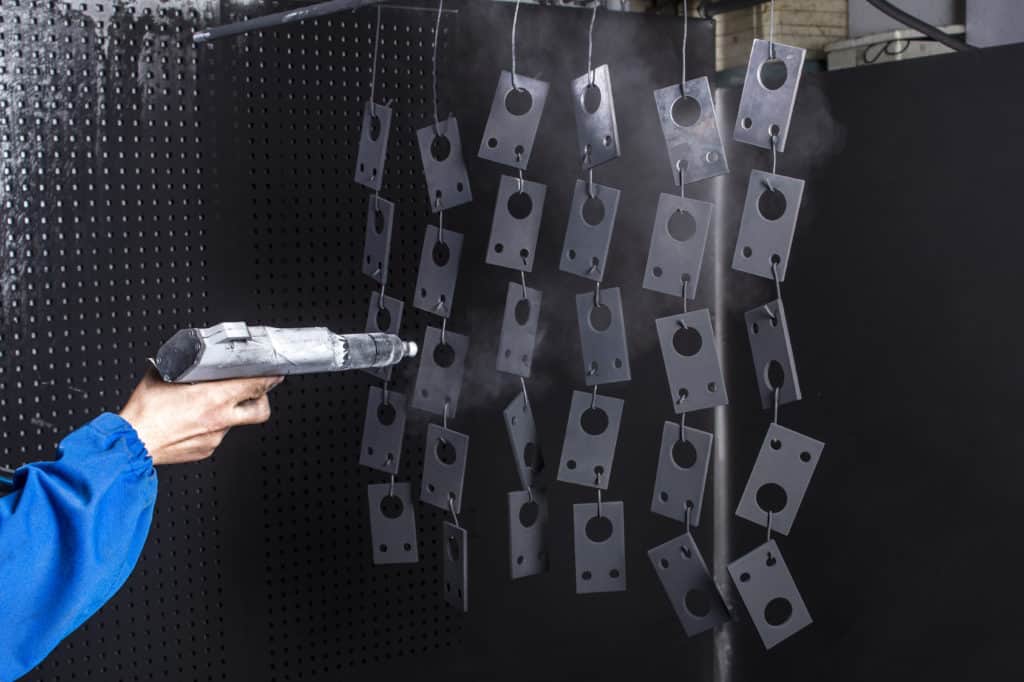
Conclusion
Powder coating has emerged as a popular and effective finishing method across various industries due to its numerous advantages over traditional liquid paints. The process offers thicker and more durable coatings, a uniform finish with minimal appearance differences, and environmental benefits, such as reduced VOC emissions and waste reduction. Furthermore, powder coating is cost-effective, rustproof, and protective for metal surfaces. It is ideal for various applications, including automotive parts, appliances, metal furniture, outdoor equipment, architectural materials, and electronic components.
Despite some limitations, such as a narrower color selection and difficulty in repairing or touching up cured coatings, the advantages of powder coating far outweigh its drawbacks. The technology continues to evolve, offering more color options, custom finishes, and improved efficiency, making it an increasingly versatile and adaptable solution for various finishing needs.
A safe and healthy working environment for powder coaters requires safety protocols, protective equipment, and industry best practices. As a result, powder coating stands as a sustainable, responsible, and effective finishing method for various applications and industries.

Frequently Asked Questions
There are different powder coating finishes available such as matte, gloss, semi-gloss, and metallic. Specialized powder coatings can also provide textured, wrinkled, or hammered effects. The variety of finishes allows for a high degree of customization to suit individual project requirements.
Yes, both horizontally and vertically coated surfaces can be powder coated. The electrostatic application process ensures that the dry powder adheres to the surface, regardless of its orientation. As a result, powder coating is suitable for a wide range of characters and shapes, including horizontal components.
Using spray paint over a powder-coated part is technically possible, but it is not advisable. Powder coatings should be durable and long-lasting, and applying spray paint over the existing layer may not adhere well or compromise the original finish’s integrity and appearance. For proper guidance on repairing or touching up a powder-coated component, you should seek advice from a skilled powder coater.
Powder coating and spray paint use different coating methods. While spray painting involves the application of liquid paint with a solvent carrier, powder coating involves applying a dry powder to the surface using an electrostatic process. The part coated with powder is baked in an oven until the powder melts and creates a robust and long-lasting coating. This method produces a more uniform and thicker layer than spray painting, produces fewer VOC emissions, and is generally more environmentally friendly.
Powder coating produces thicker coatings because it doesn’t rely on a liquid carrier like traditional liquid paints. The dry powder is applied directly to the surface and then heated in a curing oven. The powder melts and flows, forming a uniform, thick layer that bonds to the surface. This process results in heavier and more durable coatings than those achieved with liquid paint.
